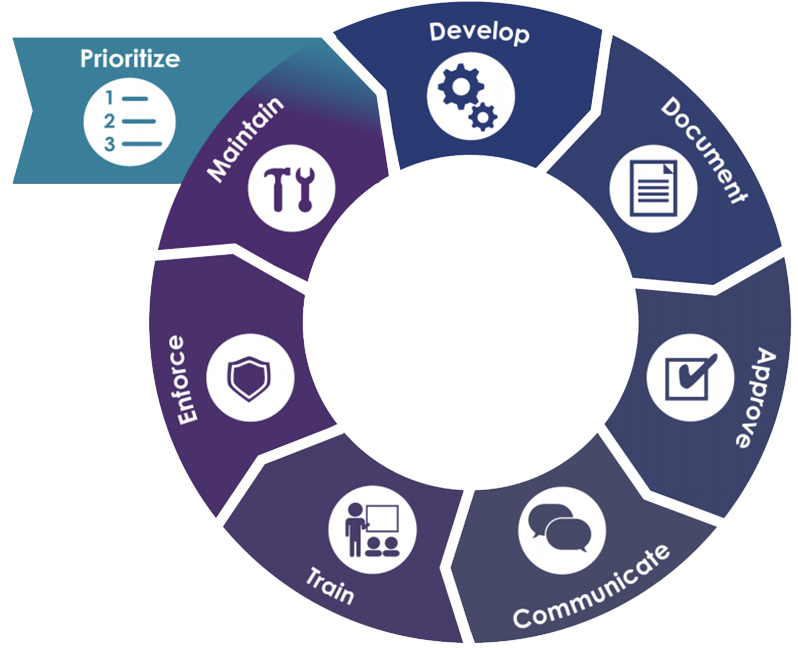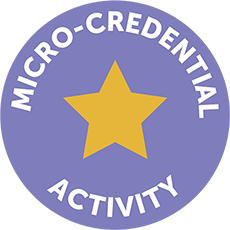Creating and Implementing Data Policies and Processes
Overview
Understand the difference between data policies and data processes through using this resource. Then, use this template to draft data policies and processes relevant to your use case.
The success of your district’s use case solution will be highly dependent on the strength of the data processes and policies that are implemented to support it. In this activity, your district will learn how to develop and implement sustainable data processes and policies. After building your district’s understanding, your team will inventory current data processes and policies that are related to your district’s use case solution. This inventory will allow for your team to identify gaps in policies and processes that could impact your district’s use case solution. After completing this inventory, your district will draft and create new processes and policies that are needed to successfully support your district’s use case solution.
Understanding Effective Data Policies and Processes
Your team should first review the “Developing Effective Data Policies and Processes” guide from the Institute of Education Sciences (IES) Statewide Longitudinal Data System (SLDS) Grant Program to familiarize yourselves with the role of data policies and processes in data governance. In particular, your team should understand the following:
- The difference between data policy and data process
- The cycle for implementing data policies and processes

Data Policy and Process Inventory
In this part of the activity, your team will reflect on data policies and processes that are essential to your district’s use case solution.
- Using the list of content areas in the “Developing Effective Data Policies and Processes” guide, identify the areas that are most relevant to your district’s use case solution. Please note: The data content areas in this guide represent some of the most frequent subjects of policies and processes. Your district might combine, further separate, identify others, or use different terminology for these content areas in their policies and processes.
- Using the areas identified above, identify policies and processes that already exist in your district that will support your district’s use case solution. Review policies from an equity stance to identify any bias that needs to be addressed or changes made in the process. Do policies influence data collection and management? If so, are these processes built from an anti-racist and asset-based stance? If there are any gaps with a policy or process, record them in the last column.
Example
| Policy # | Policy | Process | Policy or Process Gaps (if applicable) |
|---|---|---|---|
| 2-D | Parents Bill of Rights for Data Privacy and Security | Your child’s personally identifiable information (PII) cannot be sold or released for any marketing or other commercial purposes. If your child is under 18 years old: You have the right to inspect and review the complete contents of your child’s education records within 45 days of the DOE receiving your request and verifying your identity. You also have the right to request changes to your child’s education records when you believe they are inaccurate, misleading, or violate your child’s privacy. Your rights extend to education records stored by DOE contractors or other outside parties on the DOE’s behalf. You have the right to be notified if a breach or unauthorized release of your child’s PII occurs. You have the right to make complaints about possible breaches and unauthorized disclosures of your child’s PII and to have such complaints addressed. The DOE must provide you with a response no more than 60 calendar days from when we receive your complaint. If more time is needed, the DOE will provide an explanation to you, along with an approximate date for a response. | Need to make available in multiple languages for stakeholders |

In this part of the activity, your team will use the inventory from above to identify additional data policies and processes that are essential to your district’s use case solution. This includes data policies and processes to address any gaps that were identified above.
Use Case Data Policy and Process Development
Example
| Priority | Content Area | New Policy | New Process |
|---|---|---|---|
| 1 | Bill of Rights | Update as per new legislation. | Loop in the outreach team for translation services. |
4. Develop action plans for creating and implementing the policies and processes identified as priorities 1-3. Consider the following guiding questions as your team plans:
- What are the concrete tasks that need to be completed to implement this new policy and process?
- Who will be responsible for each task?
- How much time is required to ensure this policy and process can support your district’s use case solution effectively?
Example
Priority 1: Bill of Rights – update as per new legislation
Highlight applicable: ✔Data Policy ✔Data Process ✔Both
| Task | Owner | Timeline | Note and Reference Documents |
|---|---|---|---|
| Translate student data policies | Outreach Team | Semester 2 | Work with webmaster |